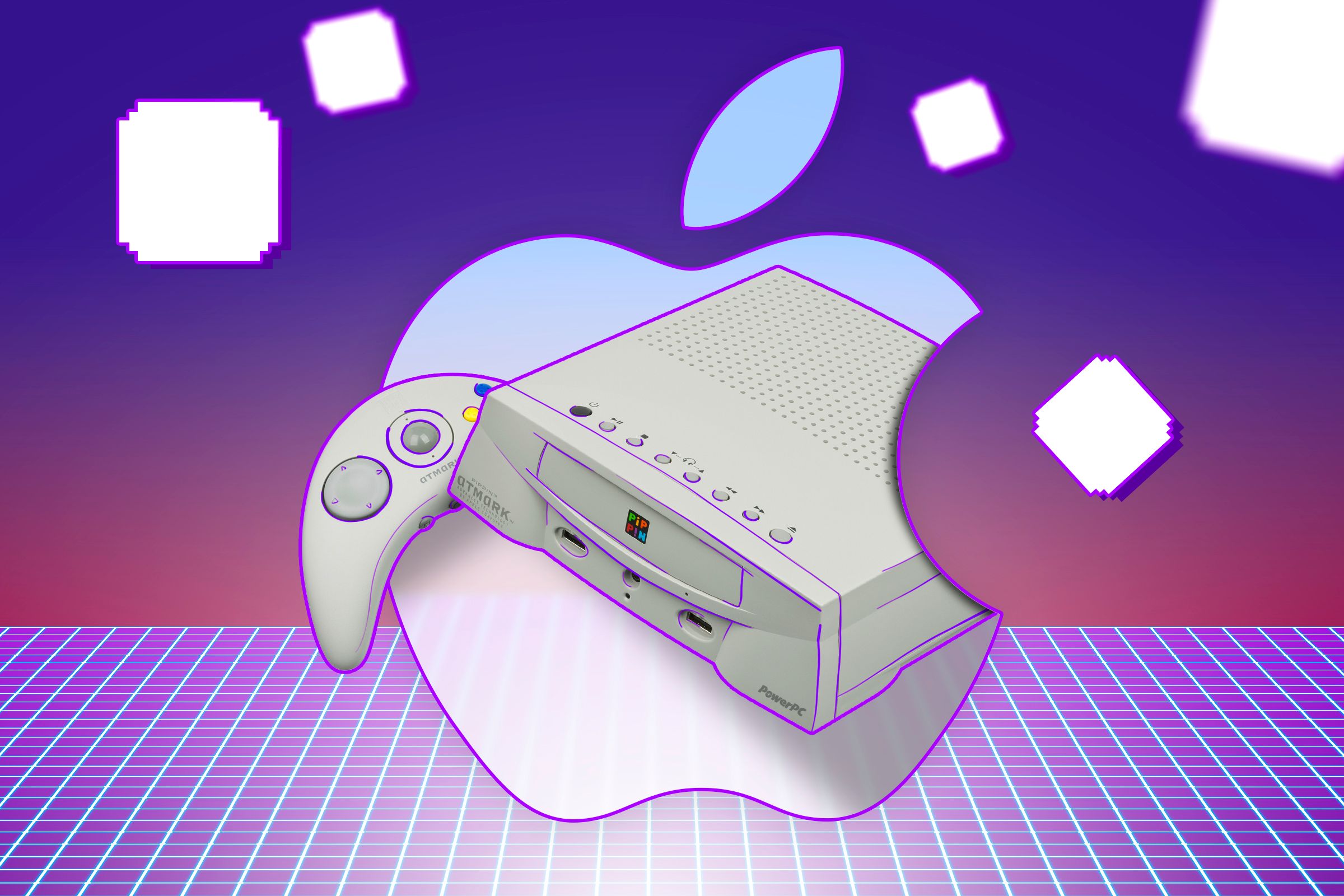Key Takeaways
- Apple released the Apple Pippin gaming console in 1996 as an open multimedia platform based on Macintosh.
- The Pippin failed due to high prices, lack of interesting features, and marketing issues, selling only around 42,000 units.
- Despite past failures, Apple could succeed with a new gaming console today, given the market has changed and is more open to tech gadgets.
Apple is well-known for its exceptional laptops and standalone computers. While these devices are fast, they’re not the best for gaming. But did you know that there was a time when Apple tried to tap into the lucrative gaming console market?
What Was the Apple Pippin?
The 90s was a time when video games slowly moved from arcades into our homes, so the decade was chock-full of iconic home video game consoles, such as the original PlayStation, Nintendo 64, Sega Genesis, and Super Nintendo. Among this fierce competition, out came a little-known console from Apple’s headquarters called the Apple Pippin, in 1996.
The Apple Pippin was based on the Macintosh, so it ran a modified version of Mac OS 7.5.2 called Pippin OS. The Pippin has a surprisingly fitting name, which was derived from an apple cultivar called the “Newtown Pippin,” a smaller apple than the McIntosh cultivar.
Apple’s goal with the Pippin wasn’t just to create another video game console; the goal was to create an open multimedia platform. This means other manufacturers could theoretically obtain a license to build their own Pippin. Some Pippins could be basic models for watching movies, whereas high-end models could have more powerful hardware for gaming and internet access.
Apple only designed the Pippin consoles; Bandai was the sole manufacturer. There was the white Pippin Atmark for the Japanese market, and the black Pippin @WORLD was built for the US market. The only other company that licensed the Pippin was a software company called Katz Media, which resulted in the Katz Media Player 2000 (KMP 2000), a rather rare version made for the European market.
As far as hardware is concerned and what the Pippin could actually do, it was fairly basic. It was powered by a PowerPC CPU and 6 MB of system and video memory (upgradable to 32 MB). Other things of note include the CD-ROM, which was a must-have in the ’90s, and a boomerang-style controller with a trackball in the center. Like other consoles of the time, it had VGA, RCA, and S-video outputs to connect to TVs and monitors.
Why the Pippin Failed
I could list a hundred potential reasons why the Pippin failed, but the main one is certainly the price. The Pippin retailed for $599, which is roughly equivalent to $1,200 in today’s money. For context, you could get a Sony PlayStation ($299) and a Nintendo 64 ($199) for the price of a Pippin, and you’d still have a hundred bucks left to spend on games. In today’s money, you can simultaneously get the Xbox Series X, PlayStation 5 Slim, and Switch Lite.
The inaccessible retail price, combined with the lack of interesting features, meant that nobody wanted to buy the console. All other fifth-generation consoles were better and cheaper. The developers had no incentive to work on the Pippin platform, resulting in a rather short list of around 25 official games. It didn’t even run Doom, at least not originally.
The only unique feature was internet connectivity, but people who wanted to browse the web could just get a PC or even a Sega Saturn and Net Link. It was a console without any direction, which is why it only sold around 42,000 units in total.
Remember, the 90s were a bad time for Apple financially, as it nearly went bankrupt due to fierce competition and failed products like the Pippin. The company did little to support the Pippin, so Bandai spent $93 million on marketing the console, yet it still resulted in a commercial failure.
It’s Never Too Late for Apple to Make a Console
Apple was certain that the time was right for the Pippin, but with the benefit of hindsight, we can see that it really wasn’t. People were more skeptical of the utility of tech devices in the 90s, and few people were willing to shell out $1,200 on a home console that might not bring any value beyond CD playback.
However, things really have changed. For instance, the Apple Vision Pro is essentially a $3,499 VR toy/tech showcase demo, and it reportedly sold around 200,000 units just in the pre-order phase.
If Apple were to release a premium $1,500 video game console with just a couple of unique features today, I think that it’d be flying off the shelves. I’m sorry, Apple TV, but you don’t count; you’re just a video streaming device that happens to run games rather than a dedicated video game console. We’re looking forward to seeing Apple release a game console, as it certainly has the money needed to launch one.
Source link
